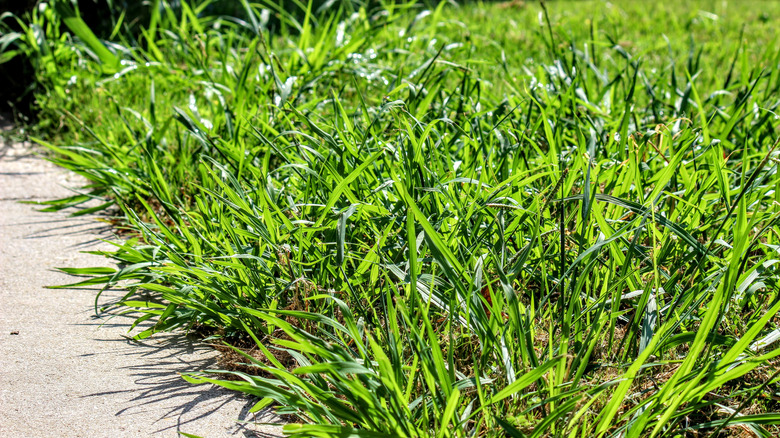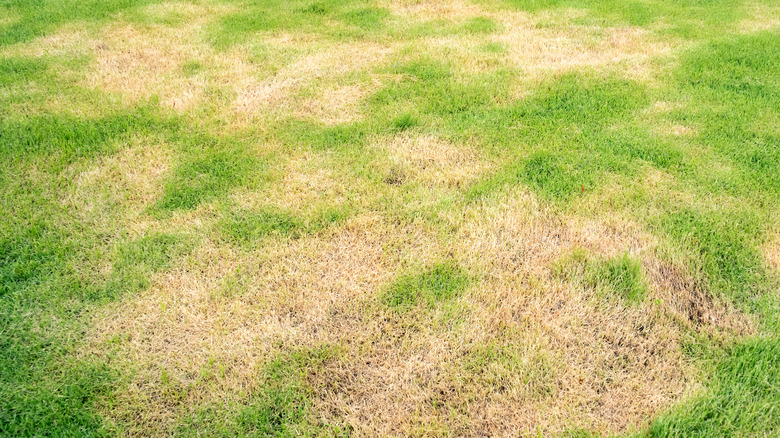Mowing Your Lawn Less Has These Helpful Benefits
A look out the window may lead to the realization that it is, once again, time to cut the grass. This chore in the summer months can be challenging, especially when the weather is very hot. At the height of each growing season you can expect your grass to grow 1/10 of an inch every day, notes the Lawn Mower Guru. However, in the right amount of sunlight and moisture, it can grow much faster, as much as 1/5 of an inch daily. That could mean cutting the grass every five to seven days, or sometimes more often, just to keep it trimmed.
However, although the grass may be growing, it's not always necessary to cut it. In fact, there are some instances in which mowing the grass less frequently is actually better for it. For those who do not like to spend an hour or more under the blaring sun mowing the lawn, consider these reasons to skip it.
It limits crabgrass growth
Mowing high and less offers a number of benefits because you'll have less accidental damage to your turf. When you mow the grass high, you naturally leave more of the grass length in place. In turn, these longer blades provide shade to the soil, which cuts down on damage from sun and excessive temperatures. According to the pros at Michigan State University Extension, by shading the surface of the soil more completely like this, there is less room for broadleaf, crabgrass, and other weeds to grow. Crabgrass, in particular, is a destructive weed that can quickly take over an open area.
Furthermore, mowing at the lawn mower's highest setting, which is usually a height of 4 inches, can help the root system to grow deeper and more fully. It may even help with some grub control. These are all good reasons not to get the mower out this weekend.
Over time it becomes more drought-tolerant
When the weather leads to drought-like soil conditions, refraining from cutting the grass as often is even more important. After a few days or weeks without rain, your lawn can go into a period of dormancy, meaning it's no longer in its growing phase. Most grass will become dry and discolored as a result.
By not cutting as often, you create more drought-tolerant grass over time. Longer grass works to minimize the evaporation of moisture from the dirt, even if that is just for a short amount of time, according to the Old Farmer's Almanac. It also helps to prevent heat damage to the grass blades and root systems. Grass clippings left on the lawn can additionally aid in this process of moisture and nutrient retention.
Even if you don't suspect a drought to happen, cutting the grass less often provides more protection from dryer-than-usual conditions. Overall, it seems clear that cutting the grass too often is a bad habit that could be destroying your front lawn.


